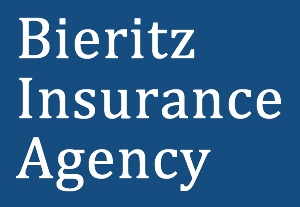Protecting Your Home and Preventing Insurance Claims
 As winter approaches, homeowners often focus on holiday preparations and staying warm, but it’s equally important to prepare your home for the challenges that the cold season brings. Winterizing your home not only ensures your comfort but also helps prevent common winter-related insurance claims. In this article, we’ll discuss the importance of winter home maintenance and provide tips on insulating pipes, checking heating systems, and maintaining fireplaces to keep your home safe and cozy.
As winter approaches, homeowners often focus on holiday preparations and staying warm, but it’s equally important to prepare your home for the challenges that the cold season brings. Winterizing your home not only ensures your comfort but also helps prevent common winter-related insurance claims. In this article, we’ll discuss the importance of winter home maintenance and provide tips on insulating pipes, checking heating systems, and maintaining fireplaces to keep your home safe and cozy.
The Importance of Winter Home Maintenance
Winter home maintenance is essential for several reasons, including:
1. Preventing Costly Repairs
Winter can be harsh on your home’s structure and systems. Freezing temperatures, snow, and ice can cause damage that may lead to costly repairs if not addressed promptly. Regular maintenance can help identify issues early, preventing them from worsening.
2. Reducing Energy Costs
A well-maintained home is more energy-efficient, which can help you save on heating costs during the winter months. Proper insulation and sealing gaps and cracks in your home’s envelope can reduce drafts and heat loss.
3. Ensuring Safety
Winter maintenance also includes safety checks. Ensuring that your heating system, fireplace, and chimney are in good working condition reduces the risk of accidents, such as fires or carbon monoxide leaks.
4. Protecting Against Insurance Claims
Many common winter-related insurance claims, such as burst pipes or roof damage due to ice dams, can be prevented with proper winter home maintenance. Avoiding these claims can help you maintain a favorable insurance record and potentially lower premiums.
Winter Home Maintenance Tips
1. Insulate Pipes
Frozen and burst pipes are one of the most common winter-related insurance claims. To prevent this:
- Insulate Exposed Pipes: Use pipe insulation or heat tape to cover exposed pipes in unheated areas, such as basements, crawlspaces, and garages.
- Seal Gaps and Cracks: Seal gaps and cracks in exterior walls and foundation to prevent cold air from reaching pipes.
- Let Faucets Drip: On particularly cold nights, allow faucets to drip slightly. Moving water is less likely to freeze.
2. Check Heating Systems
Your heating system is your lifeline during the winter. Ensure it’s in good condition:
- Furnace Inspection: Have your furnace inspected and serviced by a professional. Clean or replace filters regularly.
- Fireplace Maintenance: If you have a wood-burning fireplace, have the chimney cleaned and inspected to prevent creosote buildup, a fire hazard.
- Programmable Thermostat: Install a programmable thermostat to save energy by lowering the temperature when you’re away or asleep.
- Check Carbon Monoxide Detectors: Ensure carbon monoxide detectors are installed and working correctly, especially if you have a gas furnace or fireplace.
3. Maintain Your Roof and Gutters
A well-maintained roof and gutters can prevent ice dams and roof leaks:
- Remove Debris: Clean leaves and debris from your gutters and downspouts to allow for proper drainage.
- Inspect Roof: Look for loose or damaged shingles and repair them promptly to prevent leaks.
- Prevent Ice Dams: Proper insulation and ventilation in your attic can help prevent ice dams from forming on your roof.
4. Seal Drafts
Drafts around windows and doors can make your home feel colder and increase heating costs:
- Caulk and Weatherstrip: Apply caulk to seal gaps around windows and doors. Install weatherstripping to create a tight seal.
- Use Draft Stoppers: Use draft stoppers at the bottom of doors to prevent cold air from entering.
- Insulate Attic Access: Ensure your attic access is properly insulated and sealed to prevent heat loss.
5. Prepare for Emergencies
In case of a power outage or severe winter storm, be prepared:
- Emergency Kit: Assemble an emergency kit with essentials like flashlights, batteries, non-perishable food, water, blankets, and a first-aid kit.
- Backup Power: Consider investing in a backup power source, like a generator, to keep essential systems running during an outage.
- Emergency Contacts: Keep a list of emergency contacts, including utility companies and local authorities.
The Impact on Insurance
Regular winter home maintenance can positively impact your home insurance in several ways:
1. Prevention of Claims
By addressing potential winter-related issues proactively, you can prevent common claims, such as burst pipes or roof damage, which can result in higher premiums or policy non-renewals.
2. Maintaining a Favorable Record
A history of claims can negatively affect your insurance record and lead to higher premiums. Avoiding claims by maintaining your home can help you maintain a favorable record.
3. Potential Discounts
Some insurance companies offer discounts for homeowners who take measures to reduce risks, such as installing fire-resistant roofing or upgrading heating systems. Check with your insurer to see if you qualify for such discounts.
4. Peace of Mind
Knowing that your home is well-maintained and less susceptible to winter-related issues can provide peace of mind, allowing you to enjoy the season without worrying about unexpected damage or accidents.
Conclusion
Winter home maintenance is not just about comfort; it’s about protecting your home, your loved ones, and your finances. By following these tips and staying proactive, you can prevent common winter-related insurance claims and ensure a safe and cozy winter season. Remember that the time and resources invested in winterizing your home are an investment in the longevity and well-being of your most significant asset: your home. Call our team today at 607-547-2951 for a free quote on your homeowner’s insurance!


 Hurricanes are powerful and unpredictable natural disasters that can wreak havoc on homes and communities, even in our region in upstate NY. As a homeowner, being prepared for hurricane season is essential to safeguard your property and loved ones. In this article, we’ll share some helpful tips on preparing your home for hurricane season and explain why having the right insurance coverage is crucial during these catastrophic events.
Hurricanes are powerful and unpredictable natural disasters that can wreak havoc on homes and communities, even in our region in upstate NY. As a homeowner, being prepared for hurricane season is essential to safeguard your property and loved ones. In this article, we’ll share some helpful tips on preparing your home for hurricane season and explain why having the right insurance coverage is crucial during these catastrophic events. As schools reopen, drivers need to be extra cautious when driving near schools and school buses. Here are some essential safety tips to keep in mind:
As schools reopen, drivers need to be extra cautious when driving near schools and school buses. Here are some essential safety tips to keep in mind: When you’re a young parent, life is a whirlwind of diapers, first steps, and sleepless nights. Amid the chaos and joy of raising a family, one important consideration that often gets overlooked is life insurance. It’s easy to assume that life insurance is something you can put off until later in life, but the reality is that it’s essential, especially for young families. In this article, we’ll explore why life insurance is crucial for young families and provide guidance on choosing the right policy to protect your loved ones today and tomorrow.
When you’re a young parent, life is a whirlwind of diapers, first steps, and sleepless nights. Amid the chaos and joy of raising a family, one important consideration that often gets overlooked is life insurance. It’s easy to assume that life insurance is something you can put off until later in life, but the reality is that it’s essential, especially for young families. In this article, we’ll explore why life insurance is crucial for young families and provide guidance on choosing the right policy to protect your loved ones today and tomorrow. At first glance, spring cleaning and home insurance might seem unrelated. However, a well-maintained and organized home can significantly impact your home insurance premiums and coverage. Here’s how:
At first glance, spring cleaning and home insurance might seem unrelated. However, a well-maintained and organized home can significantly impact your home insurance premiums and coverage. Here’s how: It’s called Life Insurance, but it could just as easily be labeled Love Insurance. Buying life insurance is really an expression of love. It lets loved ones know that you care so much that you’ve made plans to provide for their well-being…even after you’re gone.
It’s called Life Insurance, but it could just as easily be labeled Love Insurance. Buying life insurance is really an expression of love. It lets loved ones know that you care so much that you’ve made plans to provide for their well-being…even after you’re gone. As the calendar turns a new page, many individuals and businesses take the opportunity to set resolutions and goals for the year ahead. Among the priorities that often get overlooked is the review and update of insurance policies. However, this crucial step can have a significant impact on financial security, providing peace of mind in the face of life’s uncertainties. In this article, we’ll delve into the importance of reviewing and updating insurance policies at the beginning of the year, and some proactive steps you can take to make sure your coverage is aligned properly with your current circumstances.
As the calendar turns a new page, many individuals and businesses take the opportunity to set resolutions and goals for the year ahead. Among the priorities that often get overlooked is the review and update of insurance policies. However, this crucial step can have a significant impact on financial security, providing peace of mind in the face of life’s uncertainties. In this article, we’ll delve into the importance of reviewing and updating insurance policies at the beginning of the year, and some proactive steps you can take to make sure your coverage is aligned properly with your current circumstances. Understanding the Importance of Small Business Insurance
Understanding the Importance of Small Business Insurance
 Motorcycles offer a thrilling and liberating way to travel the open road, but they also come with unique risks that demand heightened attention to safety and insurance considerations. In this comprehensive guide, we’ll explore motorcycle safety tips to keep riders safe and delve into the importance of motorcycle insurance, highlighting how it differs from auto insurance.
Motorcycles offer a thrilling and liberating way to travel the open road, but they also come with unique risks that demand heightened attention to safety and insurance considerations. In this comprehensive guide, we’ll explore motorcycle safety tips to keep riders safe and delve into the importance of motorcycle insurance, highlighting how it differs from auto insurance.



 Explore Part-Time Employment:
Explore Part-Time Employment:




